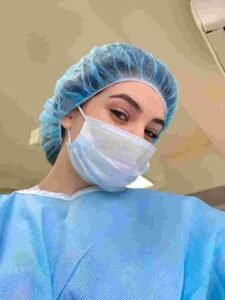Plastic & Reconstructive Surgery Doctor Full Time

Introduction:
Plastic & Reconstructive Surgery is an area of medicine that mix expertise with an artistic touch to restore and rebuild, or to rebuild and enhance the size and form and function of the human body. The work of the Plastic & Reconstructive Surgeon is not merely cosmetic; it is an important role in enhancing the quality of life in individuals who are victims of trauma, birth defects, burn victims, and other adverse conditions. They carry out cosmetic surgery as well as reconstructive procedures to restore or rebuild deformed or injured parts of the human anatomy.
Key Responsibilities of a Plastic & Reconstructive Surgeon
1. Preoperative Assessment and Planning
One of the most high responsibilities of a Plastic & Reconstructive Surgeon is to handle a preoperative evaluation of patients. This includes understanding with the patients medical history, discussing their concerns, and letting know the best approach for their surgical needs. They make a proper plan that takes into account the patient anatomy. especially medical conditions, and desired outcomes. Whether performing breast reconstruction after mastectomy or facial trauma surgery, this planning phase is crucial for success.
2. Surgical Procedures
- Reconstructive Surgery: This includes restoring body parts and tissues lost or damaged due to trauma, disease, or born conditions. For example, they might perform surgeries for burn victims, reconstruction after cancer surgery, or rebuilding damaged tissues after accidents.
- Cosmetic Surgery: Surgeons also perform aesthetic procedures such as breast augmentation, facelifts and liposuction to maximize the physical appearance of patients.
- Microsurgery: This delicate procedure uses microscopes and small tools to reconnect tiny blood vessels, nerves, or tissues, which are often needed for rebuilding work.
- Burn Surgery: Plastic surgeons frequently treat severe burns, performing skin grafts and reconstructive procedures to reduce scarring and restore function.
3. Patient Education
Plastic & Reconstructive Surgeons spend a lot of amount of time teching their patients about their condition, the proposed treatment options, and what to expect both during and after surgery. They provide guidance on things like care before surgery.
Education and Training
-
Medical School 🎓 – Future plastic surgeons start by graduating from an accredited medical school.
-
General Surgery Training 🏥 – Then, they complete 5–7 years of general surgery residency.
-
Specialized Training ✂️ – After that, they do a fellowship in plastic and reconstructive surgery.
-
Certification ✅ – Lastly, they get board-certified to work independently as plastic surgeons.
Skills
- Exceptional Manual Dexterity: Accuracy is key in plastic surgery, and surgeons must have good hand and eye coordination to perform detailed surgeries.
- Attention to Detail: A sharp eye for detail is essential in both cosmetic and reconstructive surgery to ensure Visually Enjoyable to results.
- Patient-Centered Care: Surgeons need to have sound interpersonal skills so that they can respond and empathize with the needs and fears of their patients effectively. Interpersonal skills are also helpful in reassuring and supporting the patient through what may be an anxious and vulnerable experience.
- Problem-Solving Abilities: most of the time Plastic surgery involves finding new solutions to minimize problems, especially in cases involving trauma or by born defects.
Conclusion:
A Plastic and Reconstructive Surgeon is a life changing person for patients for who need their faces or any other things to their body from surgerory to operats and plastic surgery.In my opinion there is much scope in it so best of luck.
Job Overview
-
Date Posted:
-
Location: United States
-
Job Title: Plastic & Reconstructive Surgery Doctor
-
Salary: $15,000/Month - $25,000/Month


